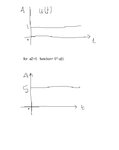talking
Member level 2
I need to set a ramp equation: y-axis is h(t), and x-axis is t (=time).
So I think of two different equations for this.
(Equation1)
h(t) = a1 * t
where a1 is a slope (or gain), and t is time.
(Equation2)
h(t) = a2 * u(t)
where a2 is a slope (or gain), and u(t) is an unit function.
Which one is correct to express a ramp signal? What's the reason for it?
Thanks.
So I think of two different equations for this.
(Equation1)
h(t) = a1 * t
where a1 is a slope (or gain), and t is time.
(Equation2)
h(t) = a2 * u(t)
where a2 is a slope (or gain), and u(t) is an unit function.
Which one is correct to express a ramp signal? What's the reason for it?
Thanks.
